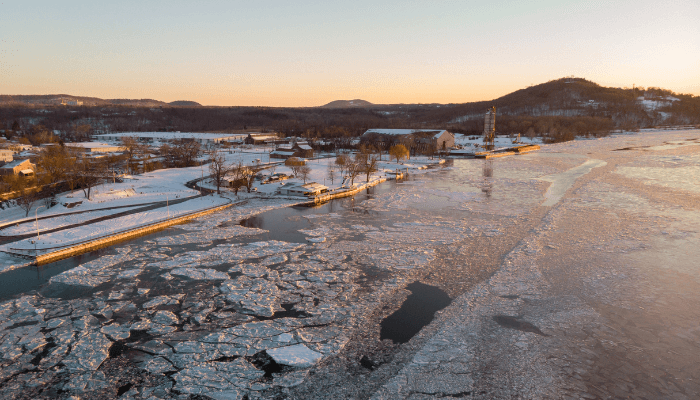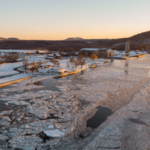7 Major Ports Of Egypt
The transcontinental country of Egypt enjoys a middle-income status and is one of the most diverse economies in the Mediterranean region and the Arab world. It has recorded positive economic growth since the initiation of 2016 financial reforms and the gradual expansion of the Egyptian IT sector. Agriculture, media, communications, manufacturing and tourism also contribute significantly to the nominal GDP.
Egypt is known for its energy market based on coal, natural gas and hydropower, found in northeastern Sinai, the Gulf of Suez and the Nile delta.
The country engages in international trade mainly through its port facilities, the busiest positioned near the Suez Canal. Around 15 ports are located along the Mediterranean and the Red Sea coasts, exporting clothes, cotton textiles, petrochemical products, rice, cement, steel, fruits and ceramics to China, the US, Germany, Italy and Gulf countries.
Let us review the seven important ports of Egypt and their distinguishing characteristics.
1. Port of Alexandria
Alexandria port dates back to 1900 BC, making it one of the oldest operational ports in the world. The principal port of Egypt, it handles around three-fourths of the nation’s maritime trade and generates around 60 per cent of trade revenue. Lying on the northern Egyptian coast, between the Mediterranean Sea and Lake Mariout, it supports a diverse industrial, commercial and agricultural economy.
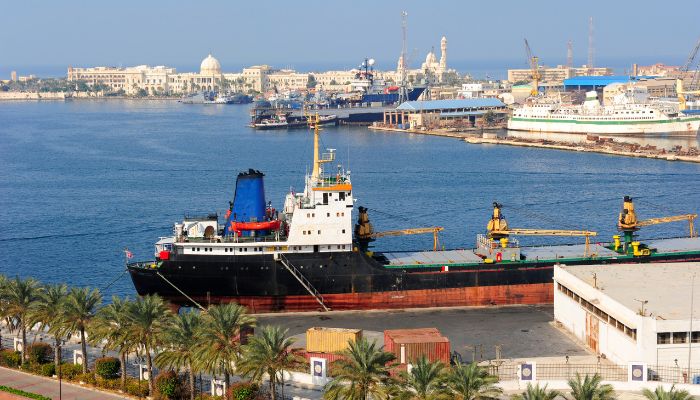
The Mina Al Basra area around the Alexandria port contains many warehouses, rice and paper mills, asphalt works, tanning factories and oil refineries. Agriculture is intrinsic to the local economy, and though cotton production has drastically declined since the late 19th century, food production still employs most of the population.
The El-Dekheila Port is an extension of the main port and is located close to the iron and steel complex and the Free trade Zone.
Port Specifications
Alexandria port is divided into two harbours by a peninsula. The eastern port is used strictly for naval purposes, whereas the western port handles trade and commerce. Approximately 6000 ships, 49,200,000 tonnes of cargo, including general, dry, and liquid Bulk, 255,000 TEUs, and over 2 million passengers are handled annually at Alexandria port.
Spanning 23 kilometres, the port has a 400 m wide entrance channel leading to the port’s six zones comprising 67 berthing facilities.
The general cargo terminal has 11 wharves for handling agricultural products such as cotton, tea, coffee, tobacco, timber and industrial products. The second zone houses two terminals for handling RORO and passengers. It also deals with Bulk cargo such as heavy machinery and construction material. The third port zone has specialised berths for accommodating coal carriers.
The fourth zone houses a container terminal along with multipurpose berths handling cement, barge discharge, fertilisers, onions, garlic, groundnuts and rice. The fifth and sixth port zones deal with molasses, grains and flour. An oil jetty lies at the port’s western end, handles edible oils, and offers bunkering services.
2. Port of Damietta
Damietta port is close to the Nile River’s mouth, just 70 kilometres from Port Said. It is the second busiest port in Egypt and handles agricultural products, fertilisers, furniture, cement, grain, general cargo and containers. Approximately 3 300 vessels, and 19,800,000 tonnes of cargo, including 1,300,000 TEUs, are handled annually at this facility.
It has been operational since the era of pharaohs and was known as Tamiat. A prosperous agricultural zone, it went into Greek control and the Ptolemies when Alexander the Great conquered Egypt in 332 BC. In 30 BC, Romans got hold of Damietta, and Christian churches built by Roman Emperors like Constantine withstood the ravages of time, standing tall near the present-day Damietta port.

Initially a small harbour and a place of historical significance, Damietta port was expanded and refurbished to relieve congestion at Alexandria.
Port Layout
Damietta port covers 9.6 square miles and has a 12 km long and 300 m wide access channel with a depth of 15 m. It has two barge channels and a turning basin with a 500 m diameter. It has 14 piers with a total quay length of 3.3 km divided among six specialised terminals.
Port Terminals
The Gas and Petrochemicals terminal handles LPG, LNG and methanol. Its annual handling capacity is 6.5 million tonnes. The container terminal covers 60 hectares and incorporates six berths with a 15.5 m water depth. It has an 800,000m2 backyard and a capacity of 1.8 million TEUs annually. Four wharves comprise the general cargo terminal, an a1.9-hectare storage area. It was designed to handle 28 million tonnes of cargo.
The Bulk terminal consists of 4 docks spanning 900 m and 250,000m2 of storage space. It has 81 tanks capable of keeping 2 million tonnes. The multipurpose terminal has three piers and handles 4 million tonnes annually. The grain terminal includes four berths equipped with an automatic conveyor system for loading and unloading grains. It can easily handle 8.5 million tonnes of grains every year.
3. Port Said
Said port lies on the northern entrance of the Suez canal across the twin city of Port Fouad. It has an artificial harbour formed by two breakwaters with multipurpose facilities for handling all cargo and passengers. It also serves a large fishing sector and diverse industrial base on textile manufacturing, glass making, cosmetics, watches, automobile tires and batteries.

Given the port’s location near the Suez Canal, it is one of the busiest African and Mediterranean facilities, renowned as a significant exporter of Egyptian cotton and rice. It also offers refuelling facilities to ships passing through the Canal. Around 4500 ships, 10,800,000 tonnes of cargo, 1,000,000 TEUs and over 2.5 million passengers are handled at the port annually. It is also a famous tourist spot having sandy beaches lined with holiday resorts.
Port Layout
The Port Said Port Authority operates and manages the Port Said West, El Arish Port, and Port Said East. All three subsidiary ports are equipped with state-of-the-art technologies and deep terminals to accommodate the latest sea-going vessels. New warehouses, silos, and yards have been constructed to handle the increasing cargo traffic. Port Said occupies around 3 million m2 of land area and is designed to handle 15 million tonnes of cargo yearly.
Suez Canal Container Terminal
This facility is located in the East port and has been operational since 2004. It was refurbished recently and has boosted port productivity manifold. It can handle 5.4 million TEUs annually and aims to become the preferred gateway to Egypt and the most significant trade hub in the Mediterranean by the end of 2025.
The terminal covers 1,200,000 m2, with a total quay length of 2400 m and a draft of 16.5 m. Equipped with 18 super-post Panamax cranes and 66 rubber-tired gantry cranes, it can accommodate the most prominent container vessels in the global container industry. It is also the only terminal in Egypt to simultaneously serve two ultra-large container ships. One of the most expansive container stacking yards and a freight station with over 3000 reefer connections are situated in the west terminal area.
4. Port of Suez
Suez Port lies on the southern end of the Suez Canal at the mouth of the Suez Gulf in northern Egypt. It has two harbours, Port Ibrahim and Port Tawfiq, linked to Cairo, Port Said and the hinterland through a complex network of railways and roadways. It is also a resting point for Muslim pilgrims en route to Mecca and Medina. A crucial facility, it handles around 2,500,000 TEUs and over 2000 vessels annually. It covers 158 square kilometres and consists of over 2.3 million m2 of warehouse space and 30,000 m2 of open yards.

The navigation channel spans 1000 m and has a 12 m water depth for accommodating cargo carriers, container ships, RORO vessels and livestock carriers. The port also has a passenger terminal receiving pleasure crafts and cruise ships carrying more than 2 million passengers annually. The port has 18 berths capable of accommodating vessels with a draft of 8 m and a 145 m LOA.
The Petroleum Dock Port, a Suez port subsidiary, is some 3.3 kilometres south of downtown Port Suez. It has seven functional berths with depths of 9 m. These cement berths serve carriers weighing up to 20,000 DWT. The facility also has an 11 m deep panel outside the main port, serving the petroleum and natural gas vessels up to 40,000 DWT.
5. Port of Adabiya
Adabiya Port is situated on the western coast of the Suez Bay and handles grains, foodstuff, urea, cement, rice, steel coils, sugar, wheat, palm oil, scrap and cattle. It is one of the biggest ports in Egypt, comprising nine berthing facilities with a total quay length of 1840 m. The port was designed to handle around 7.3 million tonnes of cargo yearly, including 5.13 million tons of general cargo and 2.8 million tons of breakbulk.
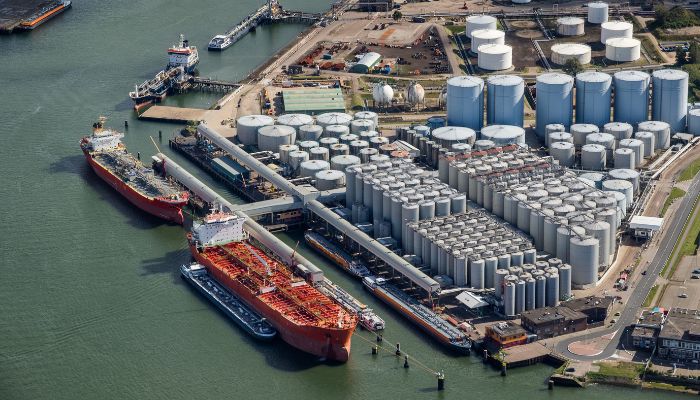
The port underwent expansion for building storage spaces, additional berths, and terminal buildings, thereby increasing the port capacity. Its general cargo berths can handle an additional 1.1 million tonnes annually. Adabiya has strengthened its reach across the Middle Eastern and East African routes due to its strategic location and increased productivity.
A special economic zone has been built near the port premises to attract businesses and foreign investment. A desalination plant and a sewage station are also being constructed.
6. Port of Safaga
Safaga port lies on the western coast of the Red Sea. It has a broad bay with deep drafts enabling the accommodation of larger cargo vessels. The port spans 57 square kilometres and includes a 15,000 m2 warehouse area and 160,000 m2 open yards.
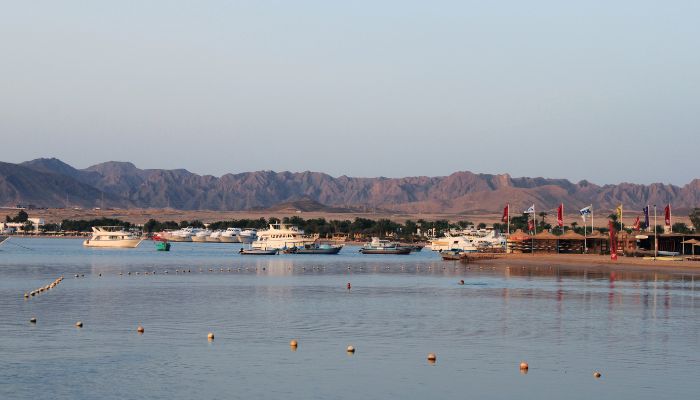
It is visited by over 1000 ships and handles around 6.38 million tonnes of cargo and 750,000 passengers annually. It has five operational quays, two for general cargo and passenger ferries, two for rock and ground phosphate and one for grains. The grain berth spans 220 m and can store 100,000 tonnes in port silos.
7. Port of Al Sokhna
The Al Sokhna Port is located near the Gulf of Suez on the Red Sea coast. Due to its excellent location, the Egyptian government allocated 9000 hectares of land for the port’s economic and industrial development, laying the foundation of the Suez Special Economic Zone.
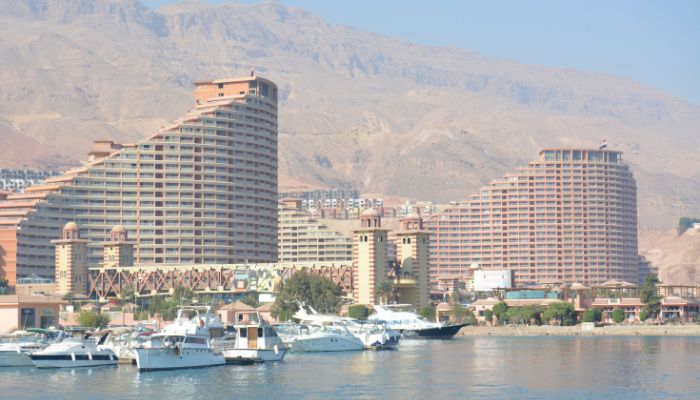
The port became operational in 2002 but had tremendous scope for growth. It can be expanded considerably for handling increased volumes of cargo. Presently, the port consists of 7 piers, including 2 RORO berths with inbuilt ramps, two container berths, two general cargo berths and a multipurpose berth with a total quay length of 2650 m.
It also has a 41-hectare container stacking yard and ground slots for 4600 TEUs. The port can handle 25,000 TEUs annually. Cold storage facilities are available, and the container freight station has 216 reefer connections. It also has a 4000m2 warehouse space for keeping general cargo.
You might also like to read-
- 6 Major Ports in Turkey
- 5 Major Ports in Libya
- 5 Major Ports Of Algeria
- 10 Major Cruise Ports in Africa
- 5 Major Ports In Sudan
Disclaimer :
The information contained in this website is for general information purposes only. While we endeavour to keep the information up to date and correct, we make no representations or warranties of any kind, express or implied, about the completeness, accuracy, reliability, suitability or availability with respect to the website or the information, products, services, or related graphics contained on the website for any purpose. Any reliance you place on such information is therefore strictly at your own risk.
In no event will we be liable for any loss or damage including without limitation, indirect or consequential loss or damage, or any loss or damage whatsoever arising from loss of data or profits arising out of, or in connection with, the use of this website.
Do you have info to share with us ? Suggest a correction
Disclaimer :
The information contained in this website is for general information purposes only. While we endeavour to keep the information up to date and correct, we make no representations or warranties of any kind, express or implied, about the completeness, accuracy, reliability, suitability or availability with respect to the website or the information, products, services, or related graphics contained on the website for any purpose. Any reliance you place on such information is therefore strictly at your own risk.
In no event will we be liable for any loss or damage including without limitation, indirect or consequential loss or damage, or any loss or damage whatsoever arising from loss of data or profits arising out of, or in connection with, the use of this website.

About Author
Zahra is an alumna of Miranda House, University of Delhi. She is an avid writer, possessing immaculate research and editing skills. Author of several academic papers, she has also worked as a freelance writer, producing many technical, creative and marketing pieces. A true aesthete at heart, she loves books a little more than anything else.
Latest Maritime Knowledge Articles You Would Like:
Subscribe To Our Newsletters
By subscribing, you agree to our Privacy Policy and may receive occasional deal communications; you can unsubscribe anytime.



